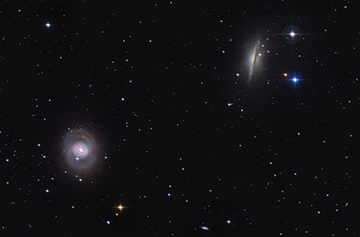The Moon Stories activity will be streamed on TAAA Facebook Live starting 2 pm (Arizona/PDT) Saturday June 27. This is a great event for families and students. For additional information or to print out activity documents, go to: https://tucsonastronomy.org/community-services/teachers-corner/.
Virtual 2020 Grand Canyon Star Party
| Schedule/Information 2020 Virtual GCSP |
·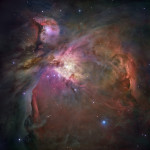
Below is the News Release and Grand Canyon Star Party Facebook Event with schedule (the schedule is also listed below). The event will be through Facebook Live starting Saturday June 13 through Saturday June 20, 2020. Each night a talk will be given at 6 pm (Arizona/PDT) and a virtual star party at 7 pm (Arizona/PDT). Grand Canyon National Park Grand Canyon’s 2020 Star Party will be Hosted Virtually [A night sky with red lighting in the forefront highlights telescopes looking at the sky. The words “Welcome to the Virtual Grand Canyon Star Party 2020!” are superimposed over the image.] https://www.facebook.com/events/252511419184647/ Go to Facebook to participate in event. Or go to Facebook and set up a personal reminder. JUN 13 AT 6 PM – JUN 20 AT 8:30 PM Welcome to the Virtual Grand Canyon Star Party 2020! Schedule Sunday, June 14, 2020 Monday, June 15, 2020 Tuesday, June 16, 2020 Wednesday, June 17, 2020 Thursday, June 18, 2020 Friday, June 19, 2020 Saturday, June 20, 2020 Definitely Also SEE Additional Information on NPS Web Page https://www.nps.gov/grca/planyourvisit/grand-canyon-star-party.htm/ |
Planets of the Month: JUNE
by Erich Karkoschka
 Mercury is easy to see in the northwest in the evening below Castor and Polux at the beginning of June between 8 and 9 pm. It can be spotted until June 15.
Mercury is easy to see in the northwest in the evening below Castor and Polux at the beginning of June between 8 and 9 pm. It can be spotted until June 15.
 Venus gets so close to the sun that it occults part of the solar corona on the 3rd, the only time until the 22nd Century. Starting on the 9th, it will be the morning “star”, when it will be only 1% illuminated. A beautiful, large, and thin crescent, visible even in small binoculars. Its illumination increases to 18% by the end of the month when it reaches almost maximum magnitude. A special event will be June 19 when the extremely thin crescent Moon will rise 2 degrees below Venus at 4 am. Venus will be obvious while the Moon will be pale as dawn brightens.
Venus gets so close to the sun that it occults part of the solar corona on the 3rd, the only time until the 22nd Century. Starting on the 9th, it will be the morning “star”, when it will be only 1% illuminated. A beautiful, large, and thin crescent, visible even in small binoculars. Its illumination increases to 18% by the end of the month when it reaches almost maximum magnitude. A special event will be June 19 when the extremely thin crescent Moon will rise 2 degrees below Venus at 4 am. Venus will be obvious while the Moon will be pale as dawn brightens.
 A Moon/Venus conjunction will take place the morning of June 19 before dawn. The Moon is full June 5, Last Quarter June 13, New June 21, and First Quarter June 28.
A Moon/Venus conjunction will take place the morning of June 19 before dawn. The Moon is full June 5, Last Quarter June 13, New June 21, and First Quarter June 28.
 Mars rises later but climbs up higher then Jupiter and Saturn by dawn. Mars is brightening toward its October close opposition. Only Venus and Jupiter are brighter than Mars.
Mars rises later but climbs up higher then Jupiter and Saturn by dawn. Mars is brightening toward its October close opposition. Only Venus and Jupiter are brighter than Mars.
 Jupiter rises around 10 pm, by 9 pm later in June. Jupiter and Saturn are only 5 degrees apart. Jupiter is three magnitudes brighter than Saturn.
Jupiter rises around 10 pm, by 9 pm later in June. Jupiter and Saturn are only 5 degrees apart. Jupiter is three magnitudes brighter than Saturn.
 Saturn rises around 10 pm, by 9 pm later in June. Jupiter and Saturn are only 5 degrees apart. Saturn is three magnitudes dimmer than Jupiter.
Saturn rises around 10 pm, by 9 pm later in June. Jupiter and Saturn are only 5 degrees apart. Saturn is three magnitudes dimmer than Jupiter.
 Uranus rises two hours later than Neptune and is still low when dawn starts.
Uranus rises two hours later than Neptune and is still low when dawn starts.
 Neptune is 1.6 degrees to the northwest of Mars on the 13th.
Neptune is 1.6 degrees to the northwest of Mars on the 13th.
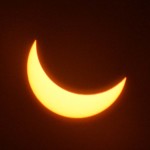 Asia and Africa will experience a solar eclipse on June 21st. It is an annular eclipse, so not quite total. An annular is when the Moon doesn’t quite cover the Sun and there is a small ring of the Sun around the Moon.
Asia and Africa will experience a solar eclipse on June 21st. It is an annular eclipse, so not quite total. An annular is when the Moon doesn’t quite cover the Sun and there is a small ring of the Sun around the Moon.
Planets of the Month: MAY
by Erich Karkoschka
 Mercury becomes visible below Venus after May 12th. It rapidly moves past venus on the 21st and will be easily observable well into June. May 21st, Venus (-4.4 magnitude) & Mercury (-.6 magnitude) have a conjunction (very close together), visible about 1 hour after sunset. On May 24th a two-day old Moon join the pair.
Mercury becomes visible below Venus after May 12th. It rapidly moves past venus on the 21st and will be easily observable well into June. May 21st, Venus (-4.4 magnitude) & Mercury (-.6 magnitude) have a conjunction (very close together), visible about 1 hour after sunset. On May 24th a two-day old Moon join the pair.
 Venus is maximum brightness at the beginning of the month and becomes visible before sunset about 45 degrees high. It can even be seen during the afternoon if you know where to look. For example just before 3 pm, look 86 degrees high, essentially overhead. It reverses its prograde motion on the 13th near Elnath and then moves rapidly toward the Sun until it becomes invisible on the 30th. This month is ideal to watch its large, thin crescent in binoculars. By the end of May, it is only 1 percent illuminated. Venus/Mercury conjunction May 21 (see Mercury).
Venus is maximum brightness at the beginning of the month and becomes visible before sunset about 45 degrees high. It can even be seen during the afternoon if you know where to look. For example just before 3 pm, look 86 degrees high, essentially overhead. It reverses its prograde motion on the 13th near Elnath and then moves rapidly toward the Sun until it becomes invisible on the 30th. This month is ideal to watch its large, thin crescent in binoculars. By the end of May, it is only 1 percent illuminated. Venus/Mercury conjunction May 21 (see Mercury).
 The Moon passes the morning planets from May 12 to the 14th. It will be most impressive on the 23rd and 24th as a thin crescent during dusk near Mercury and Venus. The Moon is full May 7, Last Quarter May 14, New May 22, and First Quarter May 29.
The Moon passes the morning planets from May 12 to the 14th. It will be most impressive on the 23rd and 24th as a thin crescent during dusk near Mercury and Venus. The Moon is full May 7, Last Quarter May 14, New May 22, and First Quarter May 29.
 Mars brightens to zero magnitude, even brighter than Saturn. It is 15 degrees east of Saturn in early May, rising to 40 degrees by the end of May. Visible in the early morning sky all month.
Mars brightens to zero magnitude, even brighter than Saturn. It is 15 degrees east of Saturn in early May, rising to 40 degrees by the end of May. Visible in the early morning sky all month.
 Jupiter rises around midnight, dominating the morning sky. Jupiter & Saturn are close all month. A waning Gibbous Moon joins the pair the morning of May 12th.
Jupiter rises around midnight, dominating the morning sky. Jupiter & Saturn are close all month. A waning Gibbous Moon joins the pair the morning of May 12th.
 Saturn follows 5 degrees east of Jupiter all month. This is the closest distance since 2000. They will separate until September and then approach again to .1 degree separation in December. A waning Gibbous Moon joins the pair the morning of May 12th.
Saturn follows 5 degrees east of Jupiter all month. This is the closest distance since 2000. They will separate until September and then approach again to .1 degree separation in December. A waning Gibbous Moon joins the pair the morning of May 12th.
 Comet PanSTARRS (C/2017 T2) should peak mid May to maybe magnitude 8 or 9. It will be within 1/2 degree of the Cigar Galaxy (M82) May 23/24 in the northern sky.
Comet PanSTARRS (C/2017 T2) should peak mid May to maybe magnitude 8 or 9. It will be within 1/2 degree of the Cigar Galaxy (M82) May 23/24 in the northern sky.
VIRTUAL Star Party
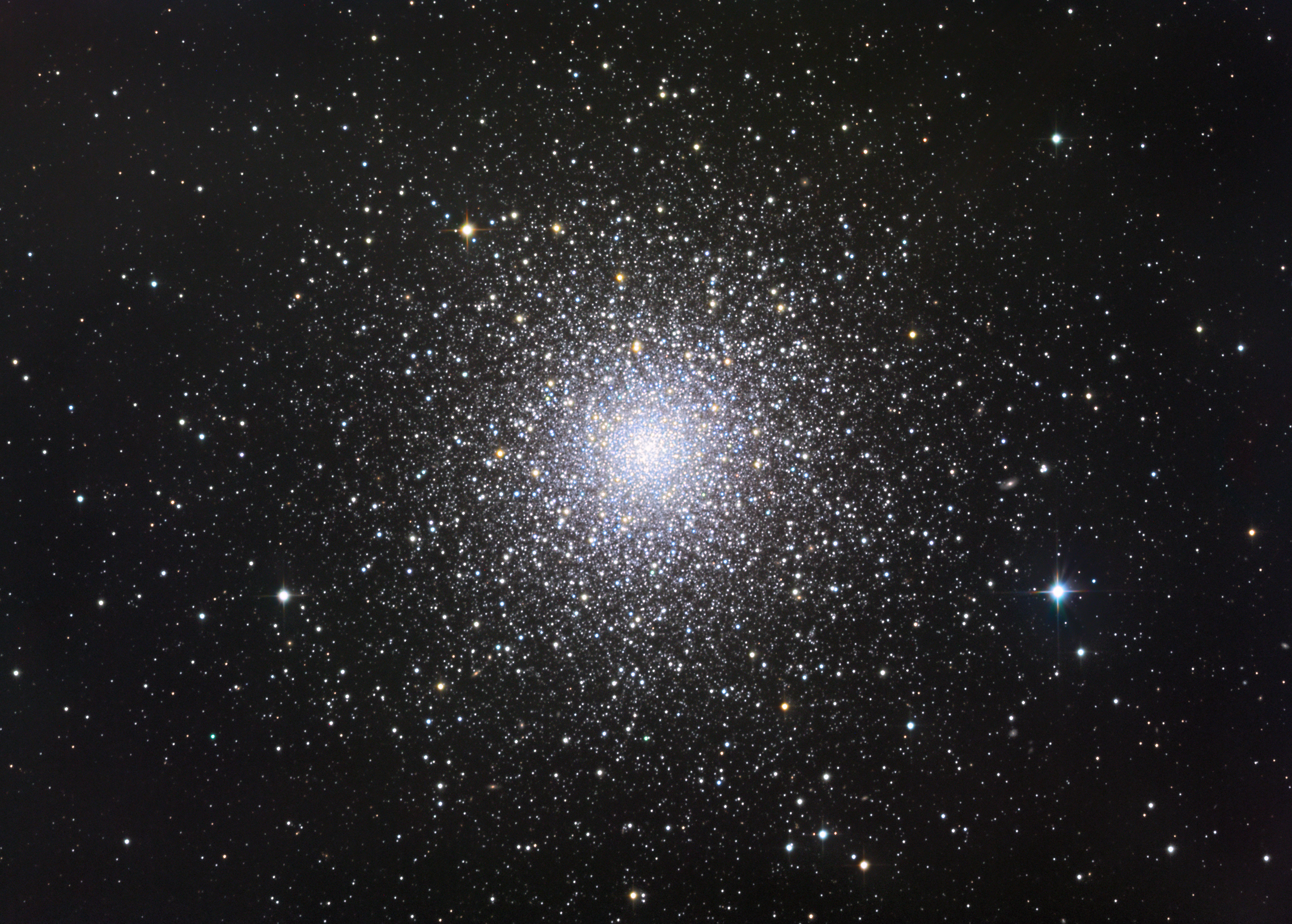
NASA image/ Teuwen
TAAA will host a VIRTUAL star party coming to you from Tucson, AZ. We will explore about 12 objects for an hour and a half. This will be a Facebook Live event and is accessible from our Facebook Page: https://www.facebook.com/TucsonAstronomy/. The event will be accessible from the Videos section and can be replayed after the event as well. The TAAA Facebook page is a public page and does not require any login to view. If you want any real-time updates, weather advisories, or other information leading up to the event, you can follow the Facebook event. The star party will go from 8:30 – 10 pm Tucson, AZ (Pacific Daylight). Tucson is GMT – 7.
International Dark Sky Week Virtual Activities (April 19-26, 2020)
By Jim Knoll
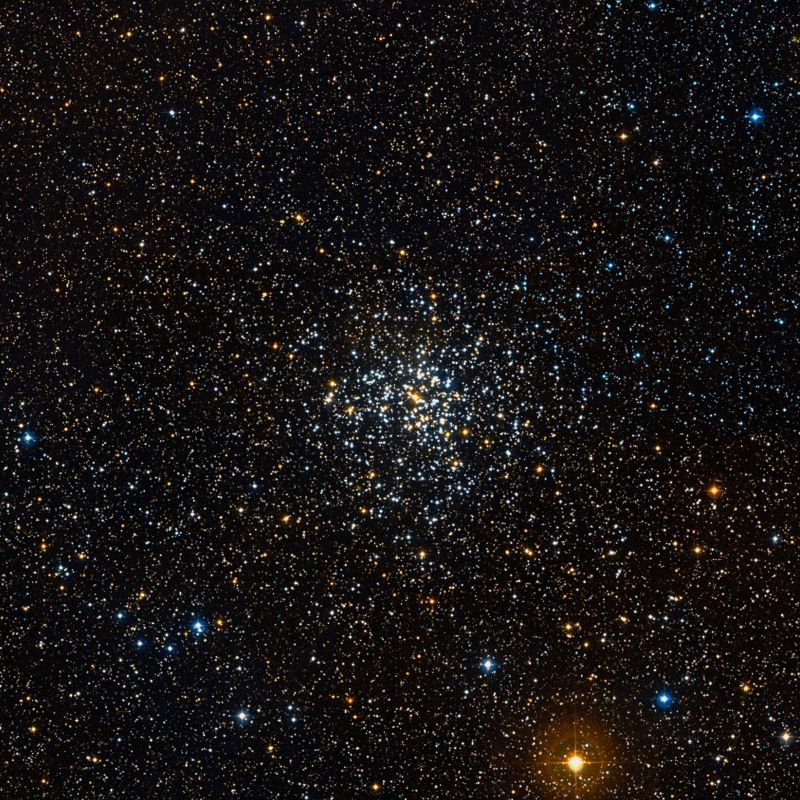
NASA Image
A few virtual events happening this week (April 19 – 26, 2020) in support of International Dark Sky Week on Facebook Live & You Tube. The Facebook pages below are public pages, so you do not need to have a Facebook account to view them. If you miss any live events, they will probably be available under Facebook Video’s.
Tuesday April 21. 11:30 am Arizona Time (GMT-7 or Pacific Timezone) on the Grand Canyon Conservancy Association (GRCA) Facebook Page (https://www.facebook.com/grandcanyonconservancy/). Ranger Rader Lane will discuss GRCAs journey to become an International Dark Sky Park.
Tuesday April 21. 8:00 pm Arizona Time (GMT-7 or Pacific Timezone) on our TAAA Facebook Page, we will be doing a Virtual Star Party, observing about 12 objects for an hour and half. TAAA Facebook Page: https://www.facebook.com/TucsonAstronomy/. The live event may be located under the Videos section.
Thursday April 23. 12 pm (Noon) Arizona Time on the GRCA Facebook Page. Dean Regas will do a Live Virtual Tour of the Universe. If you don’t immediately see the live video when you go to the Facebook page at the appointed time, look under the Live or Video section of the page.
Friday April 24. 7 – 8:15 pm Arizona Time on the Fred Lawrence Whipple Observatory. A nation-wide livestream Star Party. it will be presented on You Tube. The Whipple webpage is: https://nightsky.jpl.nasa.gov/event-view.cfm?Event_ID=112413
All Week. Log into the International Dark Sky Association International Dark Sky Week page for a schedule of presentations all week long. Many are specific for children and would be good for kids or grandkids. The link to the webpage is: idsw.darksky.org. Once there select schedule.
Planets of the Month: APRIL
by Erich Karkoschka
 Venus is 40 degrees high at sunset and close to its brightest possible (Magnitude -4.5). After its passage through the Pleiades on the 3rd and 4th, it moves toward Alnath in Taurus. It is visible late into the evening and sets around 10:30 pm. By the end of the month, it is relatively large (39 arch seconds) and 25 % illuminated.
Venus is 40 degrees high at sunset and close to its brightest possible (Magnitude -4.5). After its passage through the Pleiades on the 3rd and 4th, it moves toward Alnath in Taurus. It is visible late into the evening and sets around 10:30 pm. By the end of the month, it is relatively large (39 arch seconds) and 25 % illuminated.
 On April 15, the Last Quarter Moon joins the three morning planets in the predawn sky. On April 26, it is closest to brilliant Venus in the evening sky. First Quarter Moon is April 1 and 30, Full Moon April 7, Last Quarter April 14, and New Moon April 22.
On April 15, the Last Quarter Moon joins the three morning planets in the predawn sky. On April 26, it is closest to brilliant Venus in the evening sky. First Quarter Moon is April 1 and 30, Full Moon April 7, Last Quarter April 14, and New Moon April 22.
 Mars is the third planet to rise in the morning sky, following very close to Saturn at the beginning of April but sepertated by about 20 degrees by the end of the month. Mars is at Magnitude +1.
Mars is the third planet to rise in the morning sky, following very close to Saturn at the beginning of April but sepertated by about 20 degrees by the end of the month. Mars is at Magnitude +1.
 Jupiter rises at 2 am, dominating the morning sky at a magnitude of -2.
Jupiter rises at 2 am, dominating the morning sky at a magnitude of -2.
 Saturn follows Jupiter and is 5 degrees to the east in the morning sky abut the same brightness as Mars at a magnitude of +1.
Saturn follows Jupiter and is 5 degrees to the east in the morning sky abut the same brightness as Mars at a magnitude of +1.
VIRTUAL Star Party
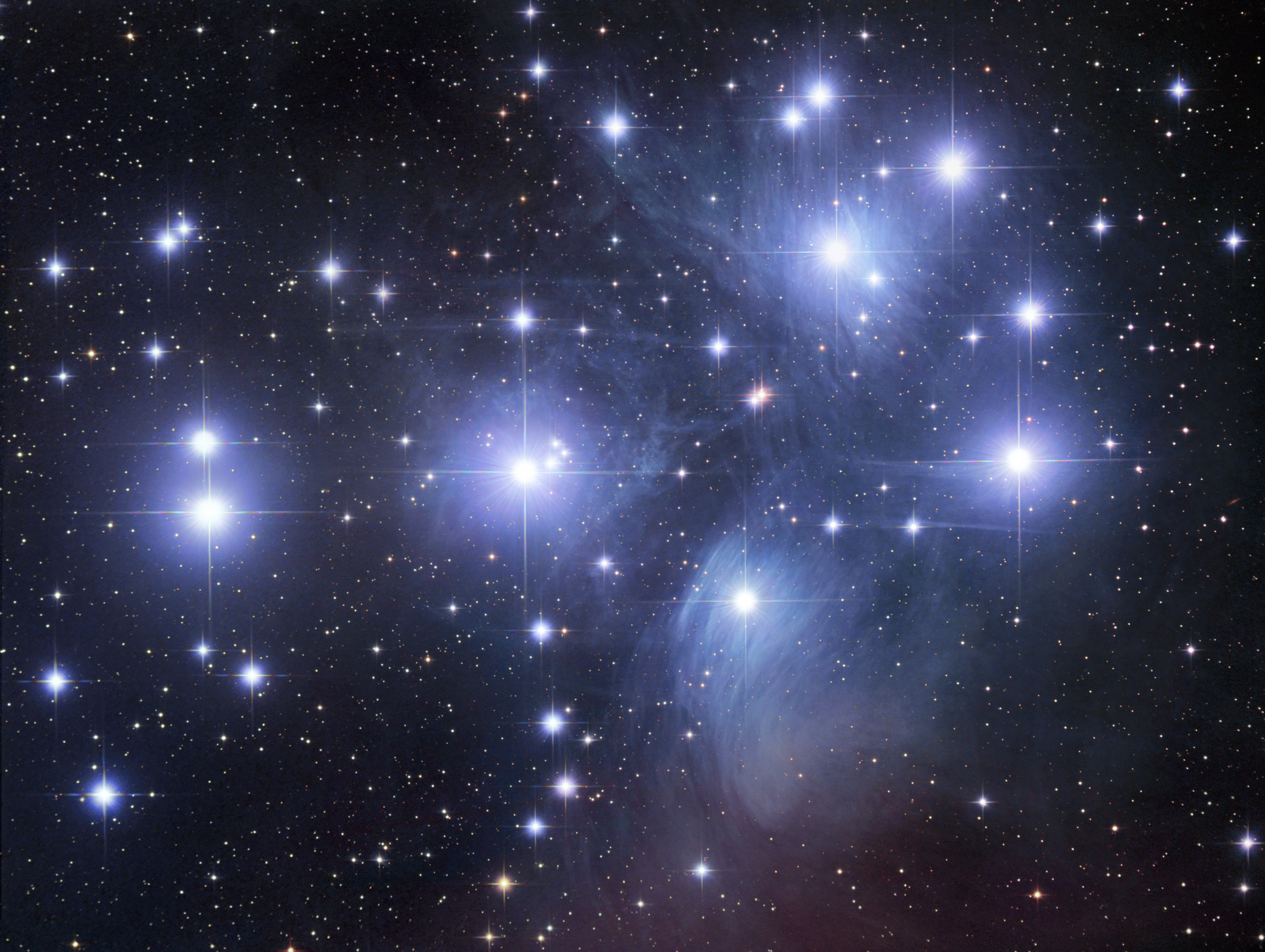
NASA Image, Robert Gendler
TAAA will host our first ever VIRTUAL star party coming to you from Tucson, AZ. We will explore about 12 objects for an hour and a half. This will be a Facebook Live event and is accessible from our Facebook Page: https://www.facebook.com/TucsonAstronomy/. The event will be accessible from the Videos section and can be replayed after the event as well. The TAAA Facebook page is a public page and does not require any login to view. If you want any real-time updates, weather advisories, or other information leading up to the event, you can follow the Facebook event.
Celebrate the Night Sky
Astronomy Day & International Observe the Moon
VIRTUAL
Join the Lunar & Planetary Laboratory and Tucson Amateur Astronomy Association for a weekend of International Observe the Moon. LPL will be hosting virtual events Friday evening, Saturday afternoon & evening, and Sunday morning & afternoon. TAAA will host some Solar Observing as part of this weekend event on Sunday at 10 am. These events will be streamed via Webinar. To register, go to: https://www.lpl.arizona.edu/art/2020.


